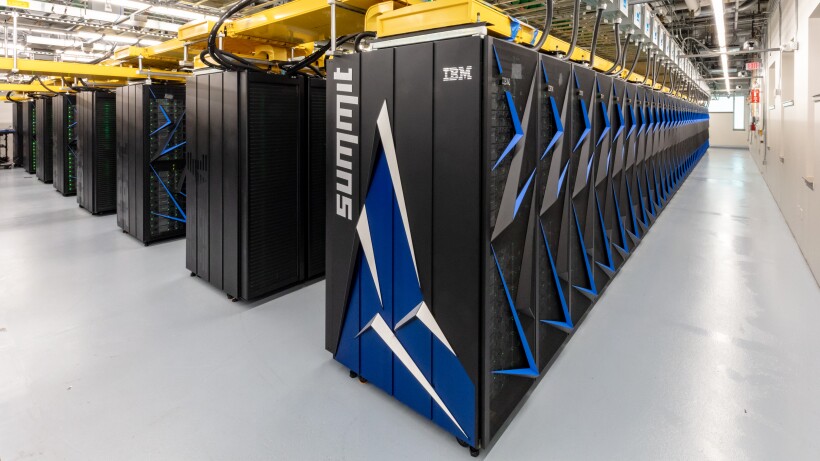NSF Launches AI Research Infrastructure Pilot

The Summit supercomputer at Oak Ridge National Lab.
(Carlos Jones/ORNL)
The National Science Foundation launched
A website
The pilot program has four focus areas:
- open AI research through NAIRR Open,
- secured, private research through NAIRR Secure,
- interoperability efforts through NAIRR Software, and
- educational efforts through NAIRR Classroom.
The computing resources currently on offer through the NAIRR include Summit at Oak Ridge National Lab, Delta GPU at the National Center for Supercomputing Applications, Lonestar6 and Frontera at the Texas Advanced Computing Center, the AI Testbed at Argonne National Lab, and Neocortex at the Pittsburgh Supercomputing Center. The pilot program is accepting usage requests


